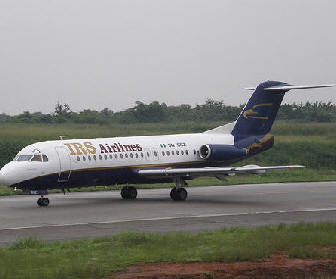|
|||||||||||
|
|
|
|||
|
By |
||||
 |
August 24, 2010 -
The Federal Aviation Administration (FAA) announced that
ICAO is the United
Nations’ technical agency for aviation which establishes international
standards and recommended practices for aircraft operations and
maintenance.
|
|||
|
|
||||
|
An IASA Category 1
rating means a country has the laws and regulations necessary to oversee
air carriers in accordance with minimum international standards, and
that its civil aviation authority – equivalent to the FAA for aviation
safety matters – meets international standards for technical expertise,
trained personnel, recordkeeping and inspection procedures.
As part of the
FAA’s IASA program, the agency assesses the civil aviation authorities
of all countries with air carriers that operate or might be authorized
to fly to the
The United States
Federal Aviation Administration (FAA) established the IASA program
through public policy in August of 1992. FAA's foreign assessment
program focuses on a country's ability, not the individual air carrier,
to adhere to international standards and recommended practices for
aircraft operations and maintenance established by the United Nation's
technical agency for aviation, the International Civil Aviation
Organization (ICAO). |
||||
|
In mid-1991, the
FAA began to formulate a program to address these concerns. This program
included visits to twelve countries with airlines seeking authority to
operate to and from the
A notice of the
FAA new policy was published in the Federal Register, Vol. 57, No. 164,
August 24, 1992. The purpose of the IASA is to ensure that all foreign
air carriers that operate to or from the
IASA Process
Overview, A foreign air carrier of a sovereign state desiring to conduct
foreign air transportation operations into the
Consistent with
international law, certain safety requirements for operations into the
Before DOT issues
a foreign air carrier permit, it notifies the FAA of the application and
requests the FAA's evaluation of the respective CAA's capability for
providing safety certification and continuing oversight for its
international carriers.
Upon DOT
notification of a pending foreign air carrier application, if the FAA
has not made a positive assessment of that countries safety oversight
capabilities, the FAA Flight Standards Service will direct its
appropriate international field office to schedule an FAA assessment
visit to the CAA of the applicant's country.
Once the
assessments visits have been completed, the FAA assessment team will
return to the
If a CAA is found
to be meeting its minimum safety obligations under the Chicago
Convention, the FAA will forward a positive recommendation to DOT. If
there is a pending foreign carrier application, DOT will issue the
requested economic authority and FAA will issue operations
specifications to permit the carrier to begin operations to or from the
When CAA's of
countries with existing air carrier service to the |
|
|
| Other News Stories |
| ©AvStop
Online Magazine
Contact
Us
Return To News
|
|


